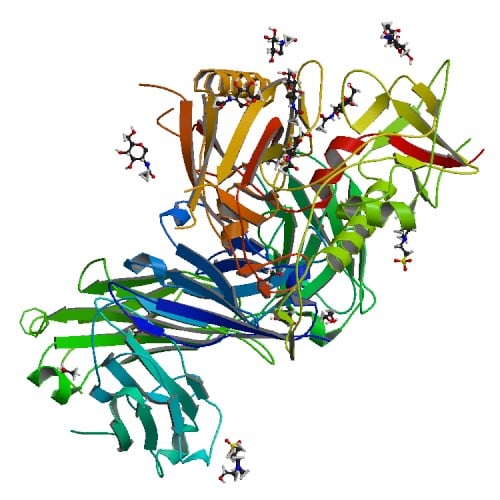Newsletter Signup - Under Article / In Page
"*" indicates required fields
A new hope for HIV: a single antibody that can target nearly all viral strains at once. What does it mean for the search of a global cure?
Last week, a research article in Cell Immunity reported a detailed study of an antibody that could neutralize 98% of HIV strains. The N6 antibody can also target 16 of the 20 strains that are resistant to other similar antibodies. The antibody, which targets the viral CD4-binding site, was isolated from the serum of a patient that showed a potent and broad response against the virus.
The secret behind this miraculous antibody is its 3D structure: the analysis has revealed that it is insensitive to mutations that disrupt contact between the antibody and the virus, a common mechanism of resistance. The researchers have tracked the evolution of this remarkable antibody to try to replicate its outstanding properties for future development.

HIV affects 36.7 million people in the world and caused 1.1 million deaths last year. While a cure is under development, possibly by 2020, antibodies are a promising strategy to prevent and fight infections in the long term. Although a common problem is that a broad target range means sacrificing potency and vice-versa, this new candidate seems to have dodged the Faustian bargain and retained both. Consequently, N6 has the potential to outperform all other antibody therapies.
The antibody, however, can only target active viruses. One of the biggest challenges for a definitive HIV cure is to target the latent virus inserted into the T cell’s DNA. Recently, a British team reported complete clearance of HIV in a patient during a clinical trial using a technique that might eliminate the latent virus and wipe the infection out completely.
Although research is challenging, scientists around the globe are working hard on fighting AIDS. This new discovery could lead to improved therapies and maybe even hold the key to overcoming the huge challenge of adapting to the rapid evolution of HIV in a future cure.
Featured image by PBO Photography; image from the Protein Data Bank.






